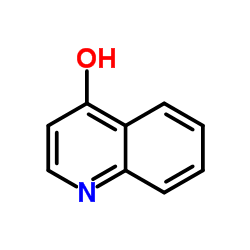The effects of hydergine on the MAO activity of the aged and adult rat brain.
A Büyüköztürk, L Kanit, B Ersöz, G Menteş, N I Hariri
Index: Eur. Neuropsychopharmacol. 5(4) , 527-9, (1995)
Full Text: HTML
Abstract
Despite the fact that hydergine has been used in the treatment of dementia for many years, its mechanism of action is still not clear. Current studies imply that the major effect of hydergine may be the modulation of synaptic neurotransmission rather than solely increasing blood flow as was once thought. A prominent feature that accompanies aging is an increase in monoamine oxidase (MAO) levels which results in decreased availability of catecholamines in the synaptic cleft. The aim of this study was to determine the effects of hydergine on the MAO activity in different brain regions (cortex, olfactory bulb, hypothalamus, hippocampus, striatum, cerebellum) of old (30 months) and adult (12 months) male Sprague-Dawley rats. In cortex and olfactory bulb MAO levels were higher in the aged group. In hippocampus and hypothalamus hydergine treatment caused significant decreases in MAO levels. An interaction between age and hydergine treatment was observed in the hypothalamus, hippocampus and cerebellum. The hydergine effect was more pronounced in the aged group in the hypothalamus and cerebellum, and more pronounced in the adult in the hippocampus. Our findings imply that increased brain MAO activity in aging can be modified by hydergine treatment in some brain regions.
Related Compounds
| Structure | Name/CAS No. | Molecular Formula | Articles |
|---|---|---|---|
 |
4-quinolone
CAS:611-36-9 |
C9H7NO |
|
Synergistic antidepressant-like effect of ferulic acid in co...
2015-12-01 [Metab. Brain Dis. 30 , 1505-14, (2015)] |
|
Evolution from a natural flavones nucleus to obtain 2-(4-Pro...
2011-08-25 [J. Med. Chem. 54 , 5722-36, (2011)] |
|
Antioxidant properties of 4-quinolones and structurally rela...
2012-01-15 [Bioorg. Med. Chem. 20 , 809-18, (2012)] |
|
5-(2-Aminopropyl)indole (5-IT): a psychoactive substance use...
2014-01-01 [Drug Test. Anal. 6(7-8) , 607-13, (2014)] |
|
Selective formation of glycosidic linkages of N-unsubstitute...
2010-04-19 [Carbohydr. Res. 345(6) , 768-79, (2010)] |